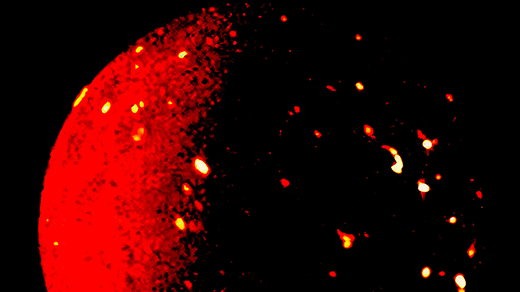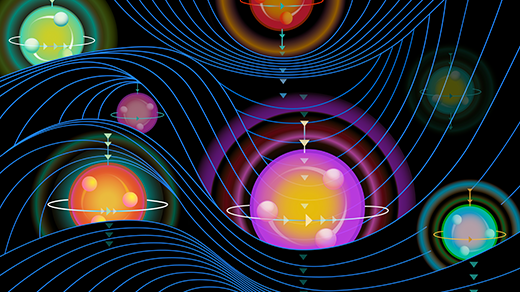Earliest Black Hole Gives Rare Glimpse of Ancient Universe
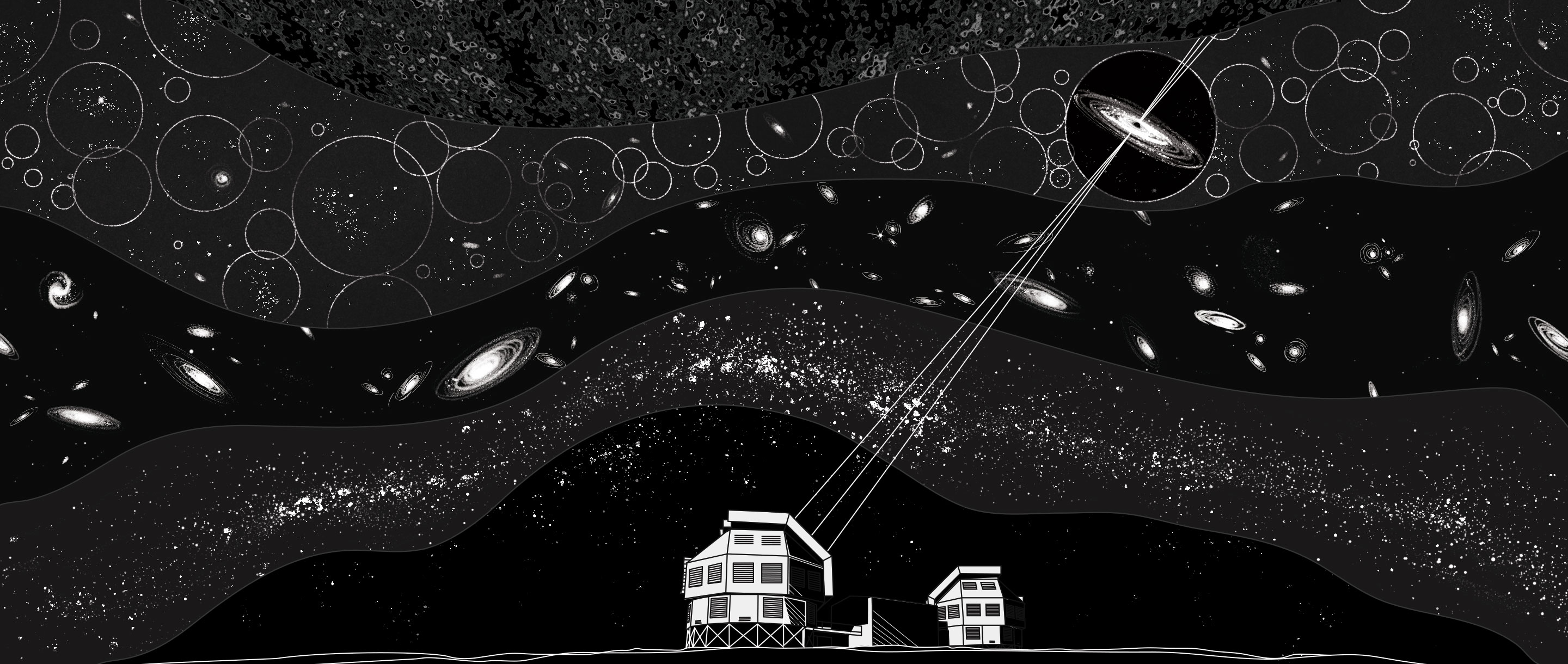
Olena Shmahalo/Quanta Magazine
Introduction
Astronomers have at least two gnawing questions about the first billion years of the universe, an era steeped in literal fog and figurative mystery. They want to know what burned the fog away: stars, supermassive black holes, or both in tandem? And how did those behemoth black holes grow so big in so little time?
Now the discovery of a supermassive black hole smack in the middle of this period is helping astronomers resolve both questions. “It’s a dream come true that all of these data are coming along,” said Avi Loeb, the chair of the astronomy department at Harvard University.
The black hole, announced today in the journal Nature, is the most distant ever found. It dates back to 690 million years after the Big Bang. Analysis of this object reveals that reionization, the process that defogged the universe like a hair dryer on a steamy bathroom mirror, was about half complete at that time. The researchers also show that the black hole already weighed a hard-to-explain 780 million times the mass of the sun.
A team led by Eduardo Bañados, an astronomer at the Carnegie Institution for Science in Pasadena, found the new black hole by searching through old data for objects with the right color to be ultradistant quasars — the visible signatures of supermassive black holes swallowing gas. The team went through a preliminary list of candidates, observing each in turn with a powerful telescope at Las Campanas Observatory in Chile. On March 9, Bañados observed a faint dot in the southern sky for just 10 minutes. A glance at the raw, unprocessed data confirmed it was a quasar — not a nearer object masquerading as one — and that it was perhaps the oldest ever found. “That night I couldn’t even sleep,” he said.
The new black hole’s mass, calculated after more observations, adds to an existing problem. Black holes grow when cosmic matter falls into them. But this process generates light and heat. At some point, the radiation released by material as it falls into the black hole carries out so much momentum that it blocks new gas from falling in and disrupts the flow. This tug-of-war creates an effective speed limit for black hole growth called the Eddington rate. If this black hole began as a star-size object and grew as fast as theoretically possible, it couldn’t have reached its estimated mass in time.
Other quasars share this kind of precocious heaviness, too. The second-farthest one known, reported on in 2011, tipped the scales at an estimated 2 billion solar masses after 770 million years of cosmic time.
These objects are too young to be so massive. “They’re rare, but they’re very much there, and we need to figure out how they form,” said Priyamvada Natarajan, an astrophysicist at Yale University who was not part of the research team. Theorists have spent years learning how to bulk up a black hole in computer models, she said. Recent work suggests that these black holes could have gone through episodic growth spurts during which they devoured gas well over the Eddington rate.
Bañados and colleagues explored another possibility: If you start at the new black hole’s current mass and rewind the tape, sucking away matter at the Eddington rate until you approach the Big Bang, you see it must have initially formed as an object heavier than 1,000 times the mass of the sun. In this approach, collapsing clouds in the early universe gave birth to overgrown baby black holes that weighed thousands or tens of thousands of solar masses. Yet this scenario requires exceptional conditions that would have allowed gas clouds to condense all together into a single object instead of splintering into many stars, as is typically the case.
Cosmic Dark Ages
Even earlier in the early universe, before any stars or black holes existed, the chaotic scramble of naked protons and electrons came together to make hydrogen atoms. These neutral atoms then absorbed the bright ultraviolet light coming from the first stars. After hundreds of millions of years, young stars or quasars emitted enough light to strip the electrons back off these atoms, dissipating the cosmic fog like mist at dawn.
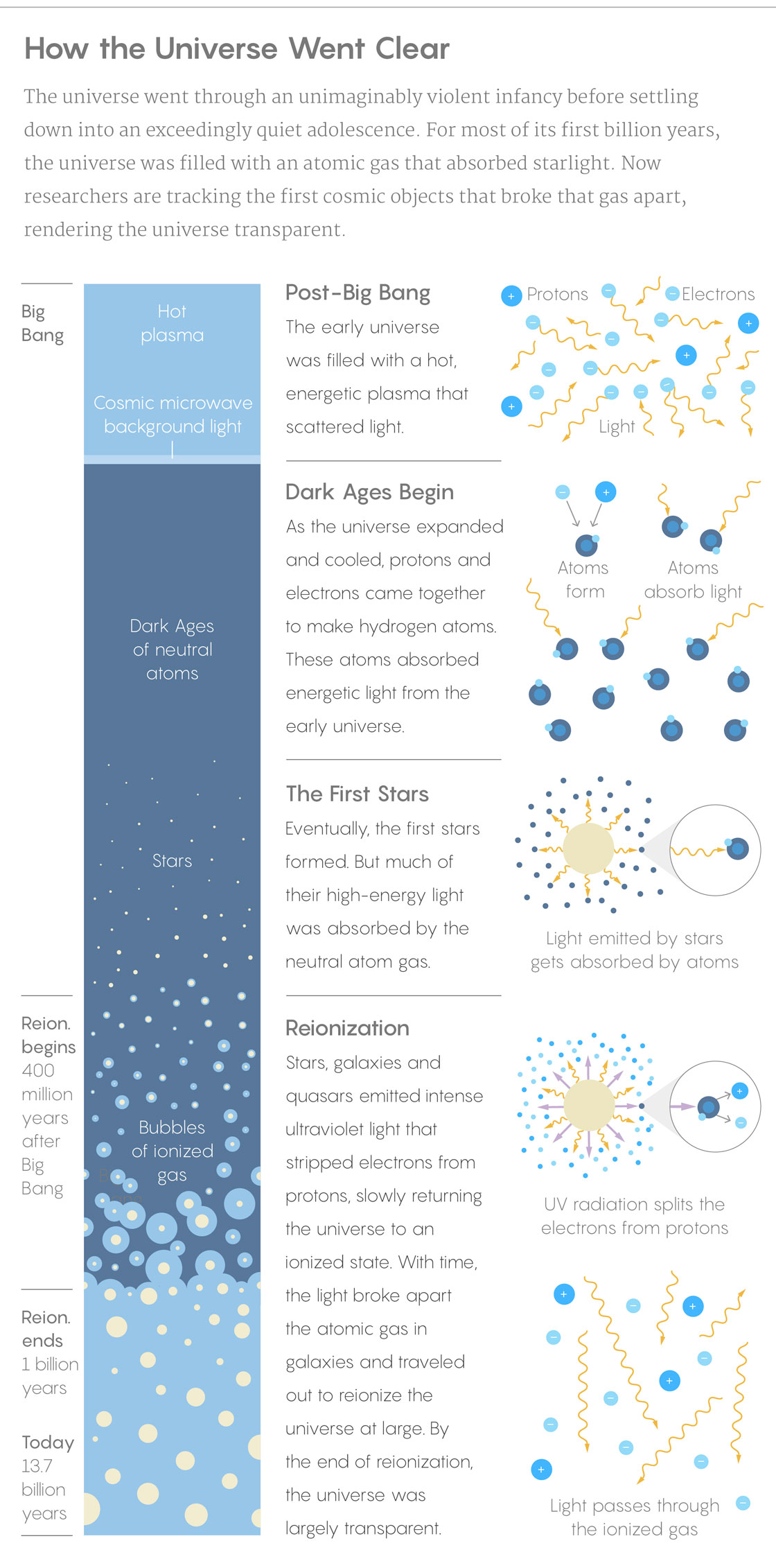
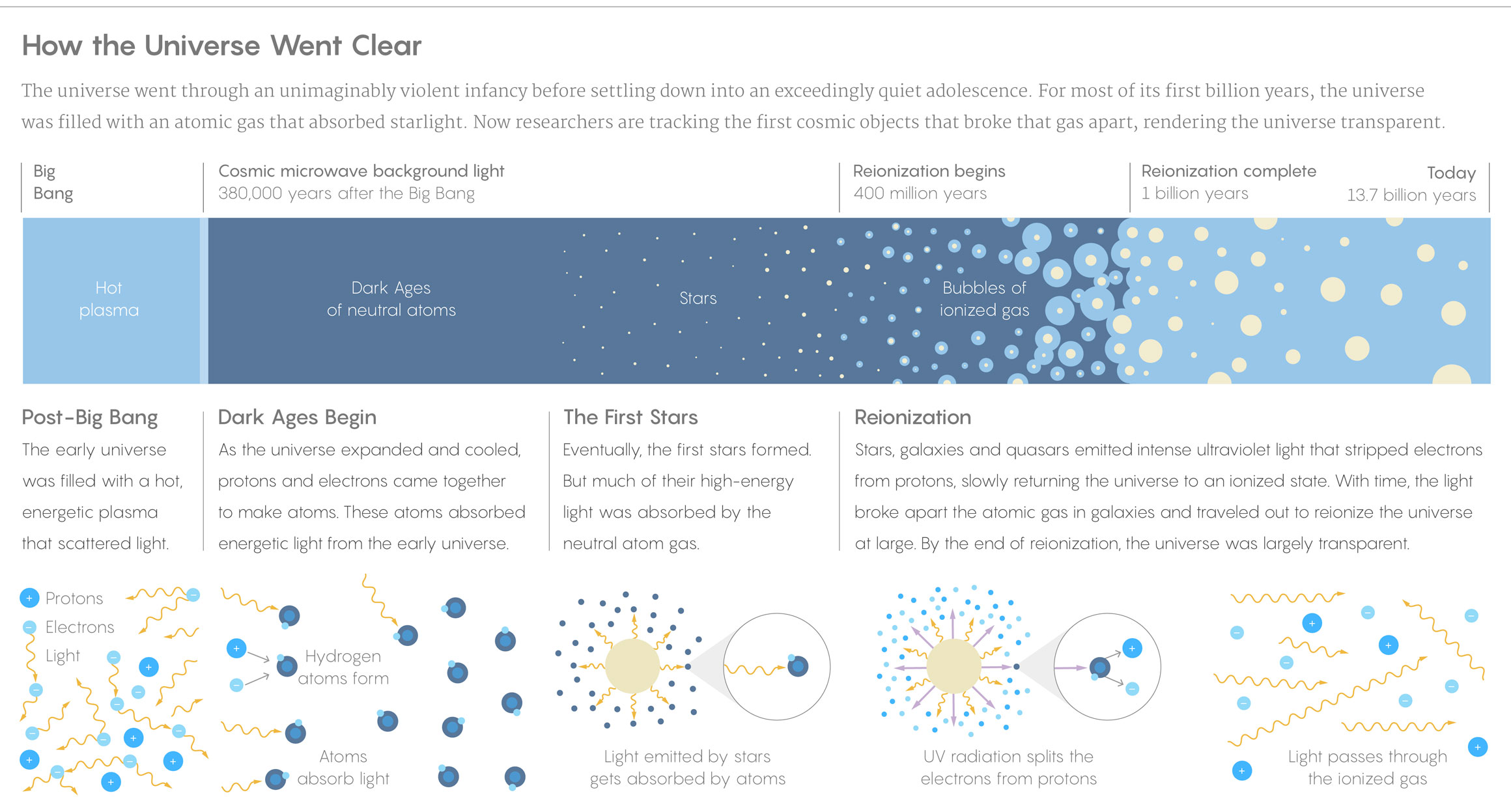
Lucy Reading-Ikkanda/Quanta Magazine
Astronomers have known that reionization was largely complete by around a billion years after the Big Bang. At that time, only traces of neutral hydrogen remained. But the gas around the newly discovered quasar is about half neutral, half ionized, which indicates that, at least in this part of the universe, reionization was only half finished. “This is super interesting, to really map the epoch of reionization,” said Volker Bromm, an astrophysicist at the University of Texas.
When the light sources that powered reionization first switched on, they must have carved out the opaque cosmos like Swiss cheese. But what these sources were, when it happened, and how patchy or homogeneous the process was are all debated. The new quasar shows that reionization took place relatively late. That scenario squares with what the known population of early galaxies and their stars could have done, without requiring astronomers to hunt for even earlier sources to accomplish it quicker, said study coauthor Bram Venemans of the Max Planck Institute for Astronomy in Heidelberg.
More data points may be on the way. For radio astronomers, who are gearing up to search for emissions from the neutral hydrogen itself, this discovery shows that they are looking in the right time period. “The good news is that there will be neutral hydrogen for them to see,” said Loeb. “We were not sure about that.”
The team also hopes to identify more quasars that date back to the same time period but in different parts of the early universe. Bañados believes that there are between 20 and 100 such very distant, very bright objects across the entire sky. The current discovery comes from his team’s searches in the southern sky; next year, they plan to begin searching in the northern sky as well.
“Let’s hope that pans out,” said Bromm. For years, he said, the baton has been handed off between different classes of objects that seem to give the best glimpses at early cosmic time, with recent attention often going to faraway galaxies or fleeting gamma-ray bursts. “People had almost given up on quasars,” he said.
This article was reprinted on Wired.com.
